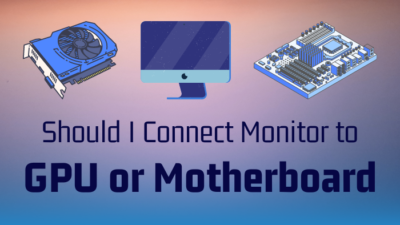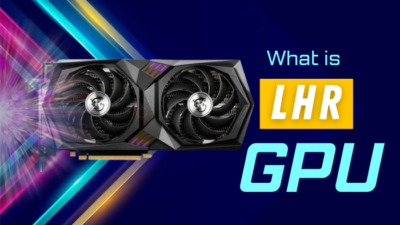When you play a graphics-intensive game like Red Dead Redemption 2, your GPU usage will be extremely high. It is usually between 95% and 100%.
And genuinely when found the utilization is at its max, it creates concerns about the lifespan and performance of the graphics unit.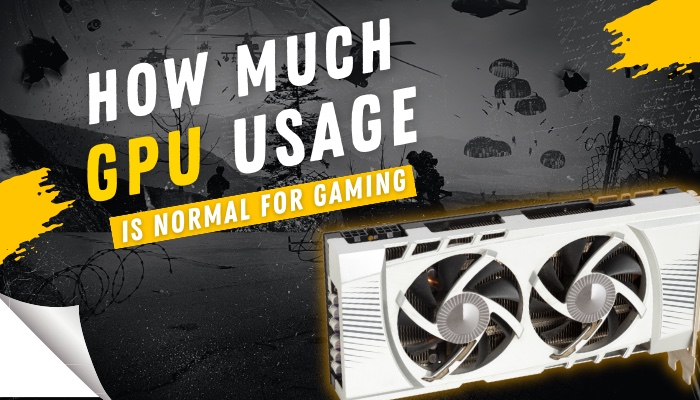
If you’re wondering how much GPU utilization is sufficient for gaming, you’ve come to the right place.
Without further ado, let’s clear the air.
How much GPU Usage is Normal for Gaming
When gaming, 80%—100% GPU usage is normal. But if the game is less GPU-hungry or less-demanding, then the GPU usage can be 40%—70%. And when gaming, your GPU employment will be at the maximum, which refers you are getting the full potential of the Graphics Processing Unit.
In an authentic sense, discovering that your GPU employment is so high is frightening. So, let’s start with a fundamental understanding of GPU utilization.
What is GPU utilization in normal circumstances?
The CPU is in charge of processing all of your computer’s tasks. And the graphics unit is present to round out the graphical performance.
When the CPU is pushed for high usage, it creates a sluggish system. But, compared to the CPU, GPU is expected to reach maximum usage.
When comparing the graphics unit to the central processing unit, both components are used differently depending on the purpose. You will encounter your GPU employment is less than 5%, when you perform tasks that do not require GPU.
Besides that, when you play a game or render a video, the GPU utilization will be at its max. When needed, the graphics processing unit’s employment remains high, and if it’s not, your GPU might be bottlenecked by the CPU or vice versa.
All things considered, you can now understand that high GPU usage, such as 80%-100%, is normal when there’s GPU demand. But, is it, healthy for the GPU to always be at or near 100% utilization? The answer will be provided in the section below.
Is Maximum GPU Usage Good or Bad?
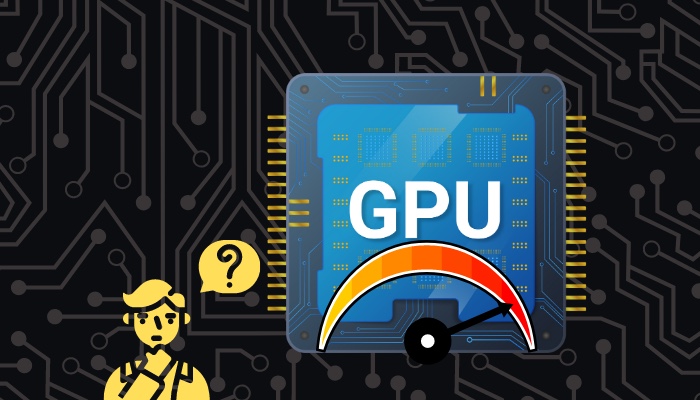 The answer to this question is both yes and no. Don’t be perplexed. Maximum GPU utilization is acceptable. However, how long you keep your GPU at that level of usage raises some concerns.
The answer to this question is both yes and no. Don’t be perplexed. Maximum GPU utilization is acceptable. However, how long you keep your GPU at that level of usage raises some concerns.
If you’re gaming for 2-3 hours and your utilization remains high, there’s nothing to worry about. However, if your time length is longer than 4-5 hours, as mine is normally more the 8 hours, for that I encounter other issues such as frame pacing or input lag.
Long-term high usage may not harm the GPU’s lifespan, but it will cause inconsistent frames and input latency issues. This can have a negative impact on your gaming experience. To address these issues, AMD’s Anti-Lag and Nvidia’s Reflex are being introduced and becoming popular.
Anti-Lag and Reflex were created to optimize usage to a point where there is enough performance to keep the FPS adequate. The GPU utilization remains high, but falls short of the maximum percentage. As a result, this question may arise.
Is 100% GPU Usage Bad?
100% GPU employment has no effect on the lifespan of your device. When you play GPU-intensive games or perform video rendering tasks, your GPU utilization may reach 100%.
A GPU can live a very long time, even when mining. And during that entire period, GPU consumption is at its highest. High GPU utilization won’t jeopardize a GPU’s lifespan.
The utilization varies according to the assigned work. Let’s now look at how the GPU is used differently depending on the task at hand.
What Should be the ideal GPU Utilization?
Gaming is normally graphics intensive activity. And when performing basic tasks your PC doesn’t require any GPU involvement, which keeps the GPU at an idle state. The usage will spike to the maximum when you initiate any GPU-intensive tasks like 3D rendering or gaming.
Here are the ideal GPU utilization depending on the tasks:
GPU Utilization During Regular Use
When performing routine tasks such as MS Word or Excel, your GPU utilization will be very low. If you do not watch any media, the GPU will be less than 10%.
When graphical performance is required, graphics processing units begin to work. And in the idle GPU state, employment is usually less than 2%. No need to worry if your GPU usage becomes low, you can easily get some help from here.
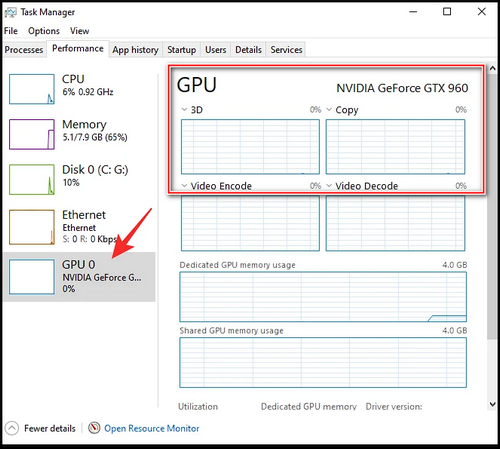
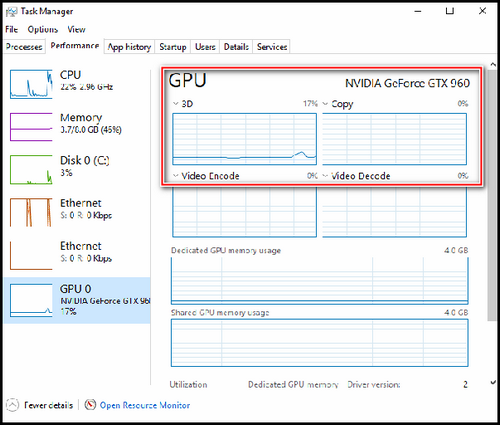
As you can see, My Nvidia Geforce GTX 960 uses 17% when I watch a movie. Nonetheless, it typically remains at 0% whenever I’m handling office tasks.
GPU Utilization During Gaming
When playing games, your utilization will be different from when performing regular duties. And while gaming, a high to maximum GPU utilization is anticipated. Also, you can determine which games are CPU or GPU-intensive with a few simple approaches.
During gaming, 100% GPU utilization is not bad. Also, it implies that you make full use of your graphics unit’s capabilities. And if you’re playing a GPU-intensive game and the use is below 85%, you might be having bottleneck problems.
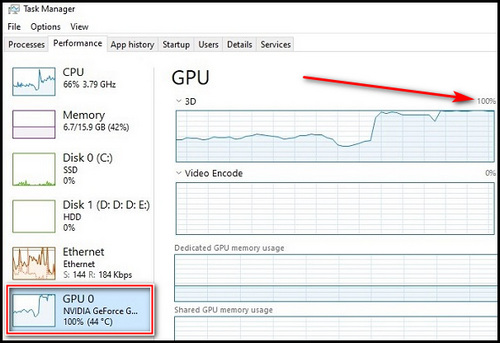
Games with capped refresh rates and games with a high GPU dependency are the two main conditions for high GPU utilization.
A GPU-intensive game like The Witcher 3: Wild Hunt requires a lot of graphic processing power while playing. Yet, GPU use remains at its highest level to maintain the frame rate.
GPU Utilization During Video Editing or Rendering
Video editing or 3D rendering is an extremely GPU-heavy task. Also, you didn’t encounter input lag or frame drops like when you’re gaming.
At the time of this GPU-intensive job, you will also see high or maximum GPU use. If you also use Sony-Vega for video editing just like me or set the rendering mode to CUDA in Premier Pro then you can turn on the GPU acceleration.
Moreover, it will speed up GPU when rendering videos. And if you use an Nvidia card as I do and value the feature, you must manually set the GPU acceleration for better performance.
Generally speaking, 3D Render Engines like Octane, V-Ray, Redshift, Cycles, and others will continue to consume a lot of GPU power. You also need appropriate monitoring software, such as GPU-Z, to keep track of your GPU activity.
And there is a good probability that another component is bottlenecking your GPU if you discover that it is not being used to its full potential.
Consequently, when idle, the GPU utilization will be less than 5%. 10-20 percent of GPU usage while watching the video. When playing low-end games, CPU employment ranges from 30% to 70%, but it can reach 100% when playing GPU-intensive games or performing rendering activities.
FAQs
Is 100% GPU usage while gaming normal?
In contrast to low-end games that are unable to utilize all resources, heavy games benefit from 100% GPU utilization. However, maintaining 100% GPU utilization when inactive for an extended period of time may result in higher temperatures, increased noise, and possibly a noticeable drop in performance.
How much GPU usage is normal?
Normal GPU employment for gaming ranges from 95% to 100%. While rendering computer graphics, you should utilize your GPU to the fullest extent possible. Any less than that may result in bottlenecking problems.
What Should Your GPU Utilization Be During Regular Use?
Your GPU consumption shouldn’t be excessive when using your desktop computer normally. GPU use will likely be nil or less than two percent when you are not streaming any films or doing anything similar, and that’s just acceptable.
Final Thoughts
If the game is GPU intensive, 90% to 100% GPU usage is generally considered normal. And if the game isn’t GPU-intensive or less demanding, you can discover that this consumption falls to 40% to 80%.
Also, you can utilize AMD’s Anti-Lag and Nvidia’s Reflex to maintain the GPU utilization below maximum and eliminate input latency if it consistently hangs above 100%. Your GPU’s performance will be guaranteed, and any worries about the product’s durability will vanish.

